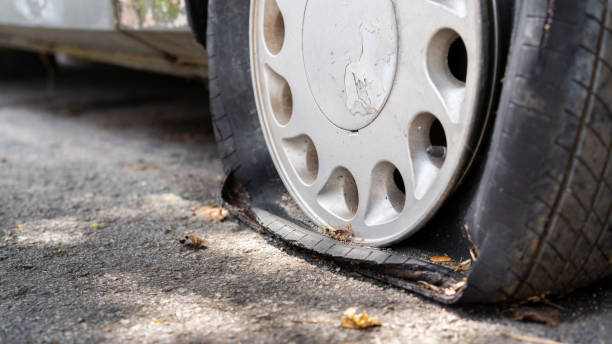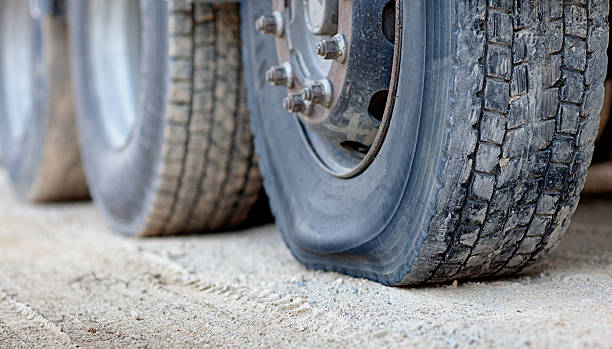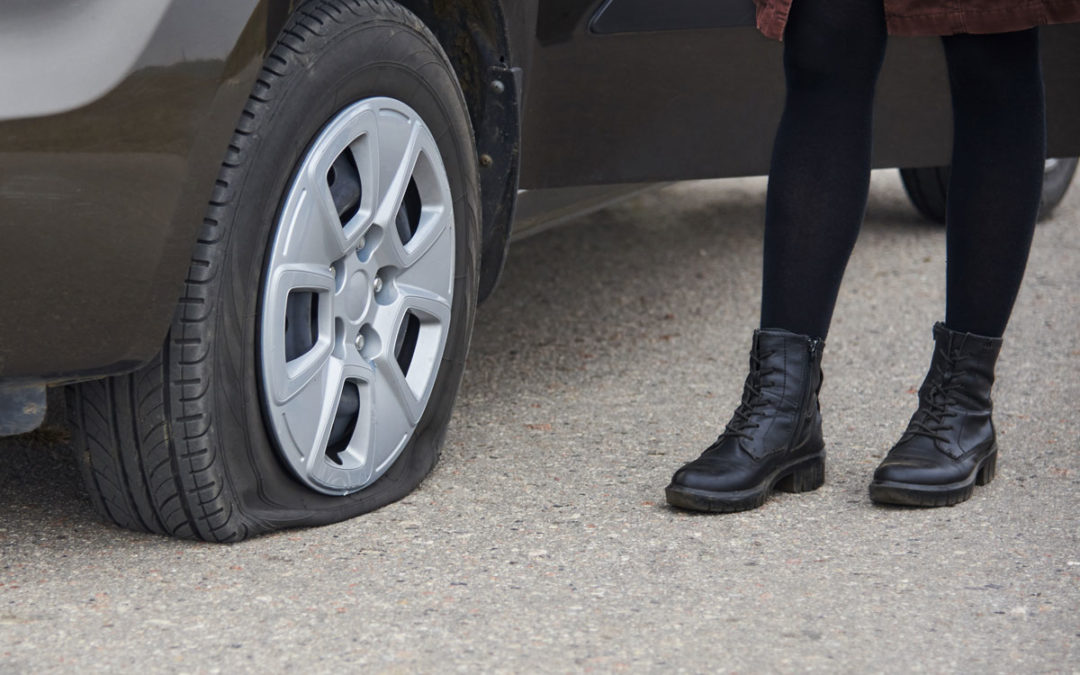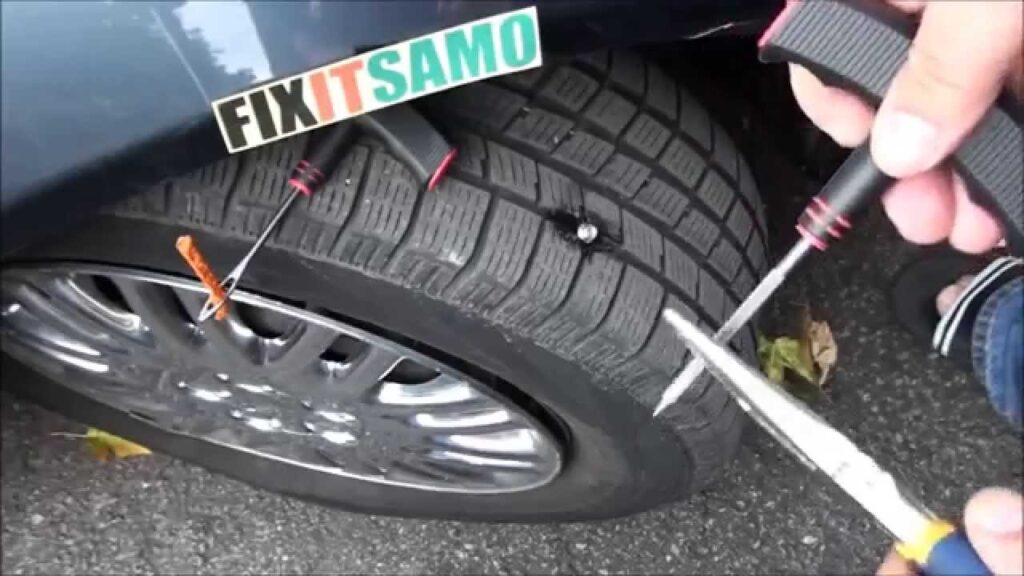To fix a flat tire, first, find a safe location and use a jack to lift the car. Then, remove the flat tire and replace it with a spare.
A flat tire can happen to anyone, anywhere. Knowing how to fix it quickly is essential for every driver. A flat tire can disrupt your journey and pose safety risks. Fixing it yourself can save time and money. Having the right tools and understanding the steps ensures you’re prepared for emergencies.
This guide will provide you with clear, easy-to-follow instructions. You’ll learn how to safely change a tire and get back on the road. Always keep a spare tire, jack, and lug wrench in your vehicle. Regularly check your tires for wear and tear to prevent flats.

Introduction To Flat Tire Challenges
Flat tires are a common problem for drivers. They can happen suddenly and cause stress. Knowing how to fix a flat tire is essential. This guide will help you understand the process and stay safe.
Common Causes Of Flat Tires
- Nails and Sharp Objects: These can puncture the tire quickly.
- Potholes: Hitting a pothole can cause tire damage.
- Worn Tread: Tires with worn-out treads are more prone to flats.
- Valve Stem Issues: A damaged valve stem can lead to air leaks.
- Overinflation: Too much air pressure can cause a blowout.
Initial Safety Considerations
Safety should always come first. Follow these steps to stay safe:
- Find a Safe Spot: Move your car to a safe location. Avoid busy roads.
- Turn on Hazard Lights: Use hazard lights to alert other drivers.
- Use Parking Brake: Ensure your car doesn’t move while you work.
- Wear a Safety Vest: Make yourself visible, especially at night.
- Place Warning Triangles: Set up warning triangles around your car.
| Item | Reason |
|---|---|
| Safety Vest | Makes you visible to other drivers |
| Hazard Lights | Alerts other drivers of your presence |
| Parking Brake | Prevents your car from moving |
Preparing For The Repair
Fixing a flat tire can seem like a daunting task. But with the right preparation, it becomes manageable. This section will guide you through the essential steps. You’ll learn about the tools you need and how to find a safe location to work.
Tools You Need
Before you start, gather all necessary tools. Having the right tools makes the process smoother.
- Spare Tire: Always have a spare tire in your car.
- Jack: This tool lifts the car off the ground.
- Lug Wrench: Use this to remove lug nuts from the wheel.
- Wheel Wedges: These prevent your car from rolling.
- Flat Tire Repair Kit: Useful for small punctures.
- Gloves: Protect your hands while working.
Finding A Safe Location To Work
Safety is crucial when fixing a flat tire. Ensure you choose a safe location to work.
- Pull Over: Find a flat, stable surface away from traffic.
- Turn on Hazard Lights: Make your car visible to other drivers.
- Apply Parking Brake: Prevent the car from moving.
- Place Wheel Wedges: Put them behind the wheels for extra safety.
By following these steps, you prepare for a smooth tire repair. Always keep these tools in your car. Choose a safe spot to work. Now, you’re ready to fix that flat tire.

Removing The Flat Tire
Removing a flat tire may seem daunting. Follow these steps to make it simple. This guide will help you remove the flat tire efficiently.
Loosening The Lug Nuts
Before you lift the car, you must loosen the lug nuts. This is an essential step. Use a lug wrench to turn each nut counterclockwise. Do not remove the nuts yet. Only loosen them a bit. This will make it easier to remove the tire later.
Lifting The Vehicle With A Jack
Now, it’s time to lift the vehicle. Place the jack under the car. Make sure it is on solid ground. Consult your vehicle’s manual for the correct jacking point. Use the jack to lift the car until the flat tire is off the ground. Ensure the car is stable before you proceed.
Taking Off The Wheel
With the car lifted, you can now remove the wheel. Finish loosening and removing the lug nuts. Keep them in a safe place. Carefully pull the tire off the hub. Place the flat tire aside. You have now successfully removed the flat tire.
Fixing Or Replacing The Tire
Fixing a flat tire is an important skill. It can save you time and money. Whether you patch or replace it, knowing the steps is crucial. Below, you’ll find steps to fix or replace a tire.
Inspecting For Damage
First, check the tire for visible damage. Look for nails, glass, or other sharp objects. Carefully run your hand over the surface. Feel for cuts or punctures.
Next, examine the tire’s sidewall. Look for bubbles or cracks. A damaged sidewall means you need a new tire.
Patch Vs. Spare: Which One?
Decide between a patch or a spare tire. Use a patch if the damage is small and not on the sidewall. Patches are quick and easy. They are also cheap.
If the damage is large or on the sidewall, use a spare tire. A spare is safer for long trips. Always carry a spare tire in your car.
Mounting The Tire Back
After patching or replacing, mount the tire back. Place the tire on the wheel hub. Tighten the lug nuts by hand first.
Use a wrench to fully tighten the lug nuts. Tighten in a star pattern. This ensures even pressure on the wheel. Lower the car from the jack. Check the lug nuts again to ensure they are tight.
| Steps | Details |
|---|---|
| Inspect Tire | Look for nails, glass, cuts, or bubbles. |
| Patch or Replace | Patch small punctures. Use a spare for large damages. |
| Mount Tire | Tighten lug nuts in a star pattern. |
Follow these steps to fix a flat tire. You’ll be back on the road in no time!
Post-repair Checklist
After fixing a flat tire, ensure everything is safe and secure. This post-repair checklist will help you confirm that your car is ready for the road. Follow each step carefully to avoid any mishaps.
Checking Tire Pressure
Always check the tire pressure after replacing a tire. Under-inflated or over-inflated tires can be dangerous. Use a reliable tire pressure gauge to measure the pressure.
- Remove the valve cap.
- Press the gauge onto the valve stem.
- Read the pressure on the gauge.
- Inflate or deflate the tire as needed.
- Replace the valve cap.
Refer to your car’s manual for the correct tire pressure. Keeping the right pressure ensures better fuel efficiency and tire longevity.
Tightening Lug Nuts
Ensure the lug nuts are tight enough. Loose lug nuts can lead to a dangerous situation. Use a lug wrench to tighten them securely.
- Place the wrench on a lug nut.
- Turn the wrench clockwise to tighten.
- Repeat for all lug nuts in a star pattern.
- Double-check each lug nut for tightness.
Using a torque wrench ensures the nuts are tightened to the manufacturer’s specifications.
Stowing Equipment Safely
After fixing your tire, store all tools and equipment properly. This prevents items from moving around while driving.
| Item | Storage Location |
|---|---|
| Jack | Trunk compartment |
| Lug wrench | Tool kit |
| Flat tire | Spare tire well |
Secure everything to prevent damage or accidents. Keep your car organized and safe.

Frequently Asked Questions
Can I Fix-a-flat Tire Myself?
Yes, you can fix a flat tire yourself. Ensure you follow the instructions on the Fix-a-Flat product.
What To Do When Your Tire Is Flat?
Pull over safely and turn on hazard lights. Use a jack to lift the car. Remove the flat tire and replace it with a spare. Tighten the lug nuts securely. Check tire pressure and drive to a mechanic for a permanent fix.
How To Quickly Fix-a-flat Tire?
To quickly fix a flat tire, locate the puncture and remove the object. Use a tire sealant or plug kit. Inflate the tire to the recommended pressure. Check for leaks.
How To Fix-a-flat Tire Without A Spare?
To fix a flat tire without a spare, use a tire repair kit. First, locate the puncture. Insert the plug into the hole. Inflate the tire with an air compressor. Drive to a service center for a professional repair. Always carry a repair kit for emergencies.
How Do You Identify A Flat Tire?
Check for visible punctures, low pressure, or unusual tire shape. Listen for hissing sounds.
Conclusion
Fixing a flat tire can be simple with the right steps. Always keep a spare tire and tools handy. Practice these steps regularly for confidence. Being prepared ensures you’re never stranded. Share this guide with friends and family to help them too.
Stay safe on the road!





















